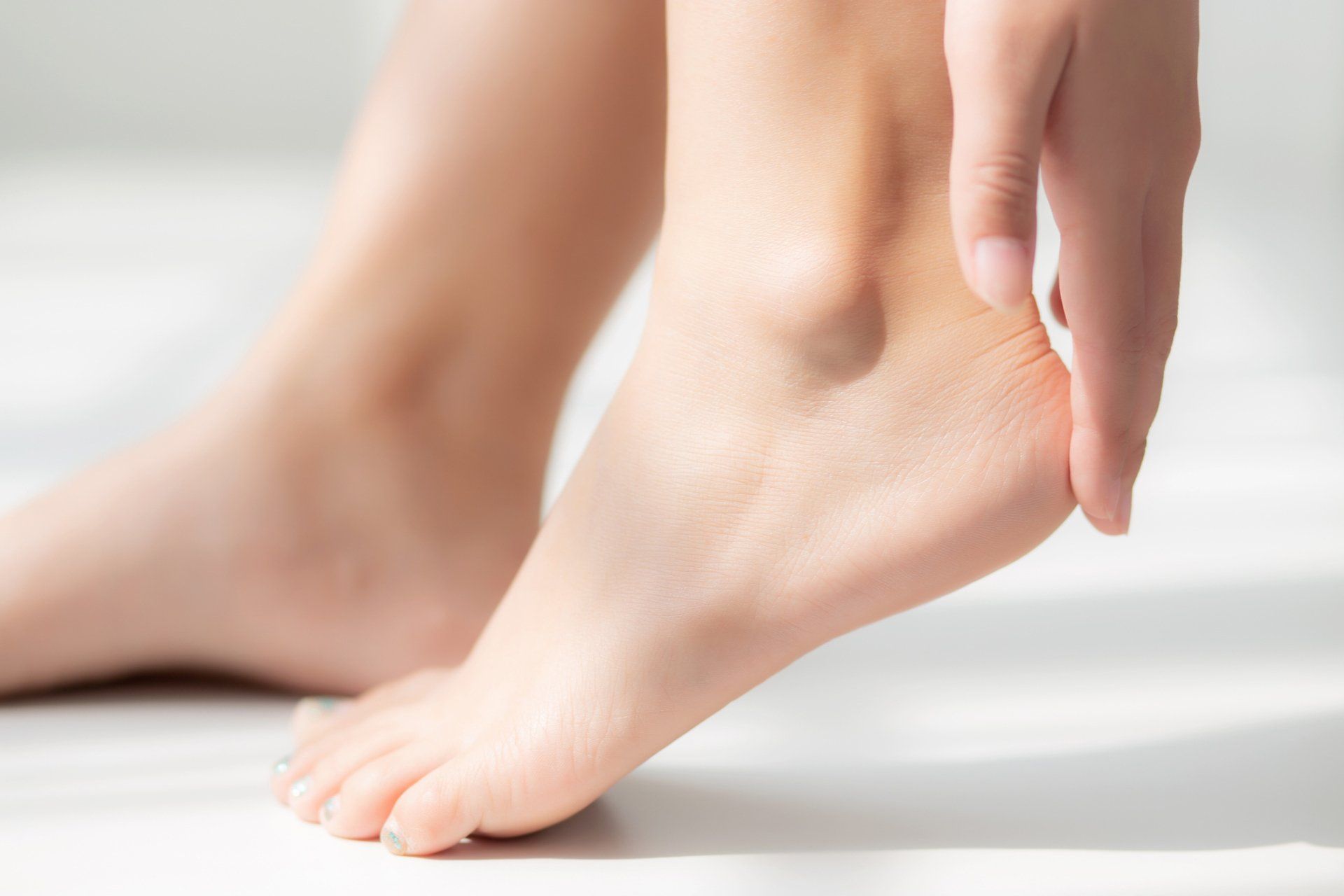Chatswood Clinic
Our Sydney City Location
Our Norwest Clinic
Ingrown Toenails Treatment in Sydney

Slide title
Write your caption hereButton
We diagnose and treat the following skin and nail complaints:
Athlete’s foot
Athletes Foot (Tinea Pedis) is a common fungal infection of the skin caused by the tinea pedis microbe. The signs of this complaint include itchiness, redness, and peeling skin between the toes. Tinea Vesicular is another fungal complaint of the foot that often presents with small blisters under the arch of the foot.
We provide the following solutions:
- Recommend appropriate antifungal medication to remove the complaint
- Advice to prevent the reoccurrence of this complaint
Calluses
Calluses (Hyperkeratosis) are a build-up of thick skin on the foot caused by friction in high pressure areas of the foot. This complaint is often accompanied by corns and can be mildly uncomfortable to painful and debilitating.
Calluses often appear on the bottom of the foot around the forefoot, as well as the heel and around the sides and tips of the toes. If calluses are left untreated, they can interrupt the vascular blood supply to the area and ulceration may result. It is recommended that people with diabetes are regularly screened and treated accordingly to prevent the development of a callus that can cause ulcerations.
We provide the following solutions:
- Complaint removal
- Advice to prevent the reoccurrence of this complaint
Corns
Corns (Heloma Dura and Heloma Molle) are painful lesions/spots of thickened skin on the foot caused by friction in high pressure areas of the foot.
Hard corns (Heloma Dura) appear on the top and sides of toes often secondary to footwear pressure and also along the bottom of the foot. Soft corns (Heloma Molle) in most cases appear between the fourth and fifth toes. These have an unbearable stinging sensation and are extremely uncomfortable.
If corns are left untreated, they can become very painful and may interrupt the blood (vascular) supply to the area and cause an ulcer. It is recommended that people with diabetes are regularly screened and treated accordingly to prevent the development corns that can cause ulcerations.
We provide the following solutions:
- Complaint removal
- Advice to prevent the reoccurrence of this complaint
Cracked heels
Deep cracks, bleeding and pain in the heel are signs of heel fissures. These are caused by thick and dry skin.
We provide the following solutions:
- Remove the dry, cracked skin
- Prescribe appropriate emollients to relieve the complaint
- Advice to prevent the reoccurrence of this complaint
Ingrown toenails
An ingrown nail (Onychocryptosis) will occur when a portion of the nail forms a jagged edge (spicule) and begins to protrude into the surrounding tissue as the nail grows. Ingrown toenails are one of the most common reasons a client seeks the services of a podiatrist. They may occur because of poor nail cutting, direct trauma to the area, running in poorly fitted footwear or they may be due to a genetic predisposition which means the nails are too wide or too curled (involuted).
Ingrown toenails should be treated as quickly as possible as infection often occurs. Whilst antibiotics may sometimes be required, they alone are generally not a long-term solution for the problem. The nail spicule must be removed, as leaving it will not allow the wound to close and the area is likely to become infected or painful again.
We provide the following solutions:
- Removal of the spicule. Following this, nail retraining is required to help the nail grow out past the skin fold or the problem will reoccur some months later. Thus, retraining of the problem nail is a vital part of solving the problem permanently.
- In persistent and severe cases nail surgery or a partial nail avulsion may be required. This is a minor surgical procedure conducted under local anaesthetic in the podiatry rooms. A narrow problematic portion of the nail is removed using a strong alcohol solution to prevent any nail regrowth in the problem area. This is a permanent solution and has a success rate of over 95%.
- We also offer advice to prevent recurrence of the problem.
Contact any of our podiatry offices in the Sydney area today to book an appointment for skin and nail foot care treatments.
Chatswood Clinic
Hours:
Mon - Fri 7.30 am - 7:00 pm
Sat 8:00 am - 3:00 pm
Sun Closed
Unit 1 341 Victoria Ave, Chatswood, NSW 2067
Our Sydney City Location
Hours:
Mon - Fri 8:00 am - 6:00 pm
Sat - Sun: Closed
Level 7, 26 College Street, Sydney, NSW 2010
Our Norwest Clinic
Hours:
Monday: 1:00 pm - 7:00 pm
Tuesday: 10:00 am - 6:00 pm
Wednesday: Closed
Thursday: 8:00 am - 7:00 pm
Friday: 8:30 am - 5:30 pm
Sat - Sun: Closed
Suite 209 Norwest Central, 10 Century Circuit, Bella Vista, NSW 2153